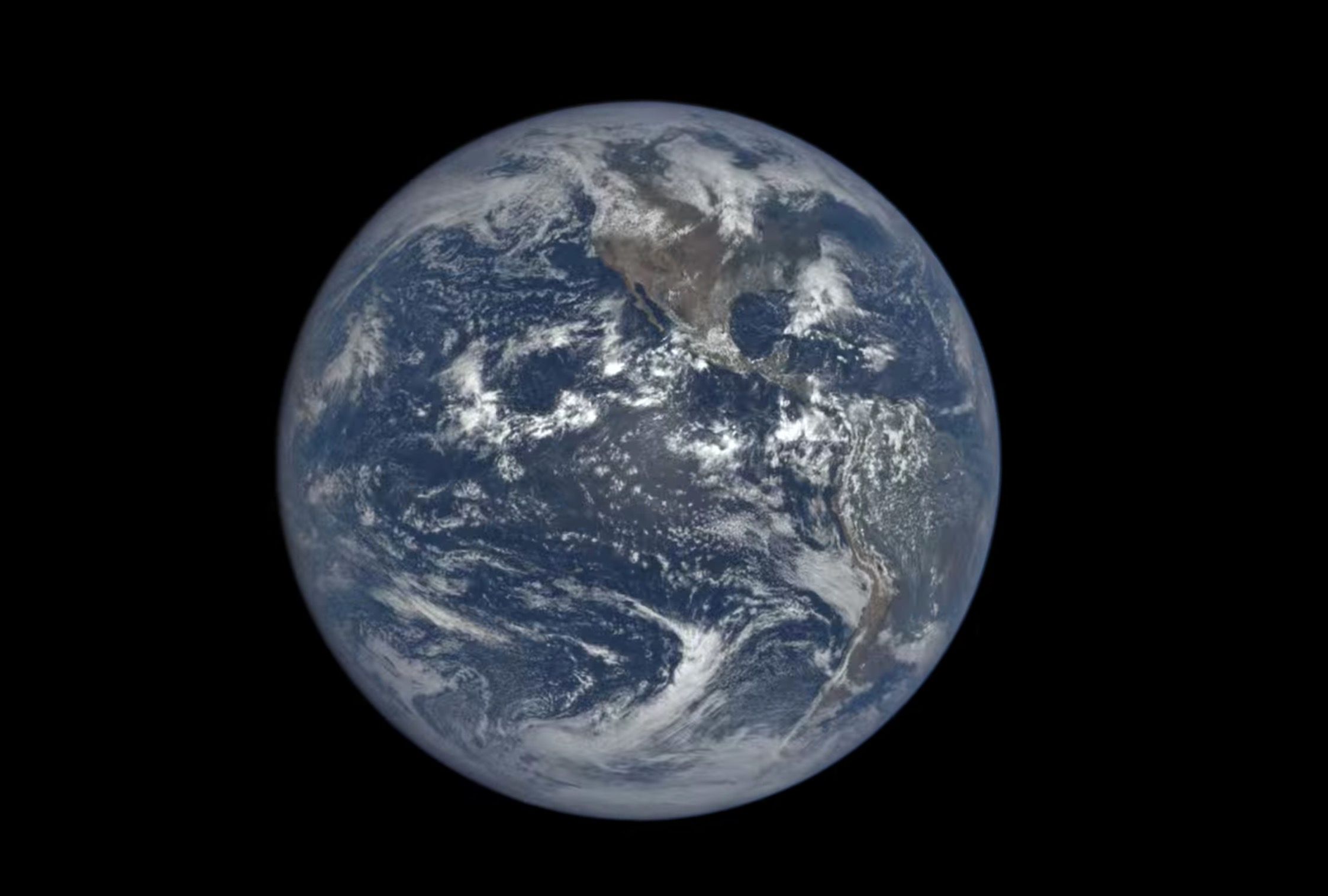A new NASA video published to YouTube shows a full year of life on Earth from about a million miles away.
Around this time last year, the US space agency also released the first image of the sunlit side of Earth. It was taken by NASA's EPIC camera aboard the orbiting DSCOVR satellite. That same camera has been taking a new picture every two hours ever since then, capturing the constantly-changing motion of clouds and weather systems and whatnot, allowing scientists to better understand climate factors like ozone layers and vegetation.
From its orbit at Lagrange point 1, approximately 1 million miles from Earth, where it is balanced between the gravity of our home planet and the sun, the EPIC camera has now recorded a full year's worth of footage, which NASA compiled into a beautiful time-lapse video (below). Jay Herman, EPIC's lead scientist, narrates the video, explaining just how monumental the timelapse is and how similar EPIC footage is scientifically useful.
Data from DSCOVR, which is a partnership between NASA, the National Oceanic and Atmospheric Administration (NOAA) and the US Air Force, could help with real-time solar wind monitoring capabilities, as the EPIC camera is capable of capturing enough images for scientists to properly study ozone and aerosol levels in Earth’s atmosphere, cloud height, vegetation properties, and the ultraviolet reflectivity of Earth.
This data is critical to the accuracy of space weather alerts and forecasts.
If you want to see even more EPIC footage, check out this amazing view of the moon transiting Earth.

